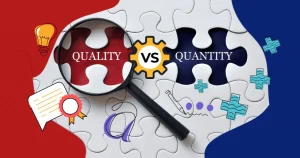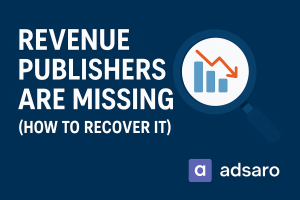CPC, or Cost Per Click, is a digital advertising pricing model where advertisers pay a fee each time one of their ads is clicked. This model is commonly used in pay-per-click (PPC) advertising campaigns on platforms like Google Ads, Bing Ads, and social media networks such as Facebook, Instagram, and LinkedIn. Unlike CPM, CPC is an effective way to drive traffic to websites, as advertisers only pay when a user engages with their ad by clicking on it.
1. How CPC Works
a. Bidding:
Advertisers set a maximum bid, which is the highest amount they are willing to pay for a click on their ad. This can be a manual bid or an automated one set by the platform based on the campaign goals.
b. Ad Auction:
When a user performs a search or visits a webpage where ads can be displayed, an auction takes place among advertisers targeting similar keywords or audiences. The ad auction considers the bid amount and ad quality to determine which ads are shown.
c. Quality Score:
Platforms like Google use a Quality Score to assess the relevance and quality of the ad and the landing page it links to. A higher Quality Score can reduce the cost per click and improve ad placement.
d. Actual CPC:
The actual CPC an advertiser pays is often lower than the maximum bid. It is calculated based on the competition and the ad’s quality and relevance. The formula for actual CPC is:
Actual CPC = Ad Rank of the next highest ad / Your Quality Score + 0.01
2. Benefits of CPC Advertising
a. Cost Efficiency
Advertisers only pay when someone clicks on their ad, ensuring that the budget is spent on users who show interest by engaging with the ad .
b. Measurable ROI:
CPC campaigns offer clear metrics to measure performance, such as click-through rate (CTR), conversion rate, and cost per conversion, making it easier to calculate ROI.
c. Targeted Reach :
Advertisers can target specific keywords, demographics, locations, and interests, ensuring their ads reach the most relevant audience.
d. Flexibility:
CPC campaigns allow for real-time adjustments. Advertisers can modify bids, ad copy, and targeting parameters based on performance data.
e. Scalability:
CPC advertising is scalable. Advertisers can start with a small budget and increase spending as they see positive results.

Drawbacks of CPC Advertising
a. Click Fraud :
Competitors or malicious actors may click on ads to deplete the advertiser’s budget without genuine interest, known as click fraud.
b. High Competition :
Popular keywords and highly competitive industries can drive up CPC, making it expensive to compete for top ad positions.
c. No Guaranteed Conversions:
Paying for clicks does not guarantee conversions. The landing page and overall user experience must be optimized to convert clicks into leads or sales for CPC.
d. Continuous Management:
CPC campaigns require ongoing monitoring and optimization to maintain performance and stay within budget.
3. Best Practices for CPC Advertising
a. Keyword Research:
Conduct thorough keyword research to identify relevant and cost-effective keywords. Use tools like Google Keyword Planner and SEMrush.
b. Ad Quality:
Create high-quality, relevant ads with compelling headlines, clear messaging, and strong calls-to-action (CTAs).
c. Landing Page Optimization:
Ensure that the landing page optimized for conversions. It should be relevant to the ad, load quickly, and provide a seamless user experience.
d. A/B Testing :
Continuously test different ad variations, landing pages, and targeting options to find the most effective combinations.
e. Monitor and Adjust:
Regularly review campaign performance metrics. Adjust bids, pause underperforming ads, and refine targeting to improve results.
f. Utilize Negative Keywords:
Use negative keywords to exclude irrelevant searches and prevent wasted clicks.
g. Leverage Ad Extensions:
Use ad extensions to provide additional information and increase the visibility and effectiveness of ads.
h. Budget Management :
Set daily and monthly budgets to control spending. Use bid adjustments based on device, location, and time of day to maximize ROI.
Conclusion
CPC (Cost Per Click) is a widely used and effective advertising model that ensures advertisers only pay for actual user engagement. By understanding how CPC works and implementing best practices, advertisers can create targeted and efficient campaigns that drive valuable traffic to their websites. Despite challenges such as competition and click fraud, the benefits of measurable ROI, targeted reach, and flexibility make CPC advertising a crucial component of many digital marketing strategies.








[…] gaming industry continues to grow exponentially, and in-game ads are emerging as a powerful way for brands to reach…